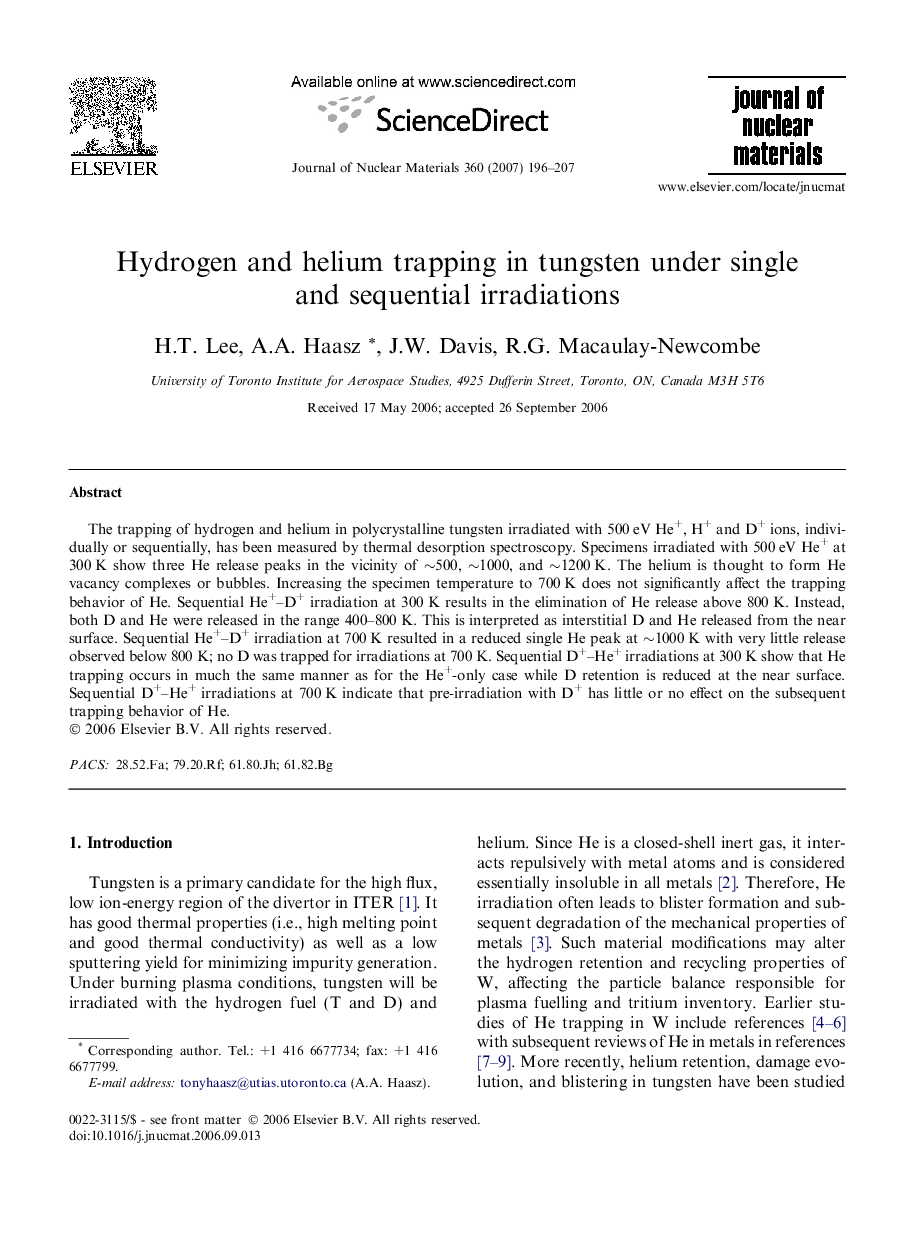| Article ID | Journal | Published Year | Pages | File Type |
|---|---|---|---|---|
| 1569667 | Journal of Nuclear Materials | 2007 | 12 Pages |
Abstract
The trapping of hydrogen and helium in polycrystalline tungsten irradiated with 500Â eV He+, H+ and D+ ions, individually or sequentially, has been measured by thermal desorption spectroscopy. Specimens irradiated with 500Â eV He+ at 300Â K show three He release peaks in the vicinity of â¼500, â¼1000, and â¼1200Â K. The helium is thought to form He vacancy complexes or bubbles. Increasing the specimen temperature to 700Â K does not significantly affect the trapping behavior of He. Sequential He+-D+ irradiation at 300Â K results in the elimination of He release above 800Â K. Instead, both D and He were released in the range 400-800Â K. This is interpreted as interstitial D and He released from the near surface. Sequential He+-D+ irradiation at 700Â K resulted in a reduced single He peak at â¼1000Â K with very little release observed below 800Â K; no D was trapped for irradiations at 700Â K. Sequential D+-He+ irradiations at 300Â K show that He trapping occurs in much the same manner as for the He+-only case while D retention is reduced at the near surface. Sequential D+-He+ irradiations at 700Â K indicate that pre-irradiation with D+ has little or no effect on the subsequent trapping behavior of He.
Related Topics
Physical Sciences and Engineering
Energy
Nuclear Energy and Engineering
Authors
H.T. Lee, A.A. Haasz, J.W. Davis, R.G. Macaulay-Newcombe,
